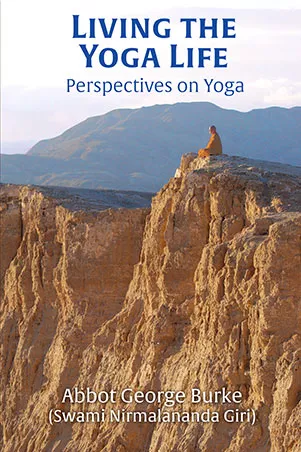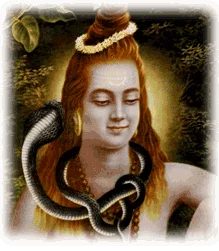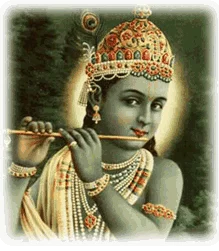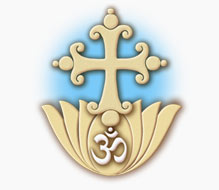
Wheat a few thousand years old was found in an Egyptian tomb. Some of it was planted and it grew. If our divine potential is closed away inside us, unknown or forgotten, nothing will come of it. But if it is put in the right environment, it will grow and bring about undreamed-of results in the form of evolution of consciousness. One seed of wisdom can produce thousands of others. One virtue can multiply into many. All that is needed is the right surroundings. If yoga is not supported by an environment that is totally conducive and consistent, it will either not grow or be stunted and weak and eventually die. I have been watching that happen for over fifty years.
***
A great deal of religion is cosmetic, just a cover-up or a repression rather than a real purification. All kinds of ineffectual things are considered to cleanse the individual but they really do not. The only thing that purifies is the evocation of higher consciousness, the consciousness that is the our true Self (Atman). And yoga is the process of purification, the first step of which is yama-niyama. Those who have an aversion to those purifying principles will not be cleansed or purified.
***
Just as alcohol or drugs can wipe out memory, in the same way things that are contrary to yama and niyama will wipe out the effects of yoga practice. But the yoga will have worked, even though the person then destroys its effects through negative and self-destructive actions.
***
If someone challenges me: “What good has yoga done for India?” I can point to thousands of years of great souls (mahatmas) and unparalleled teachers who adorn India’s history like blazing jewels, including today. But after over a century, what good has yoga done in America? The truthful answer is: very little good and a great deal of harm. Why? Because it has not been rooted in yama and niyama. Yama and niyama are the seeds of yogic attainment, which is why Patanjali lists the results of perfection (siddhi) in those “ten commandments of yoga.” (See The Foundations of Yoga.) A yogi is not above or beyond yama and niyama, he is the living embodiment of those principles.
***
“When I was a child, I spake as a child, I understood as a child, I thought as a child: but when I became a man, I put away childish things” said Saint Paul (I Corinthians 13:11). This is a matter of evolution. When a person truly evolves he understands the ins and outs of all things, including external conduct. Such a person will not act contrary to dharma, for dharmic behavior will have become natural to him. Like God, “he cannot deny himself” (II Timothy 2:13). Evil becomes as impossible for the perfected yogi as it is for God.
***
Many methods passed off as yoga are not yoga at all. Well-meaning men and women spend years practicing them and getting nowhere. Once a man wrote to me who had been practicing a worthless yoga technique for over thirty years without making any progress. Although he lamented his lack of progress, he was so brainwashed by the yoga cult he belonged to that he asked me what was wrong with him. The truth was that nothing was wrong with him. The method was worthless and the cult repressive and destructive. But I knew that he would go to pieces if I told him that, so I urged him to pray and look within for the answer. There was nothing else I could say. People who are entrenched in personal delusions are unreachable. I have never come across an exception.
***
If you have a translation of the Gita on your computer, you will find it very instructive to do a search for the word “senses.” It is surprising how much of the Gita deals with the subject of the senses. Here are the most relevant passages:
“The intelligent, buddhic awareness of him whose senses are withdrawn from the objects of the senses on all sides will be found firmly established” (Bhagavad Gita 2:68).
“He who by the mind controls the senses, and yet is unattached while engaging action’s organs in action, is superior” (Bhagavad Gita 3:7).
“He who possesses faith attains knowledge. Devoted to that pursuit, restraining the senses, having attained knowledge he quickly attains supreme peace” (Bhagavad Gita 4:39).
“That firmness of intellect or purpose by which through yoga the functions of the mind, the vital force (prana) and the senses are restrained, is sattwic” (Bhagavad Gita 18:33).
Total mastery of the senses reveals the Self. And yoga produces that mastery.
***
“One acts according to one’s own prakriti–even the wise man does so. Beings follow their own prakriti.” (Bhagavad Gita 3:33). There is no means for finding or developing qualities which one’s prakriti does not possess. What you have, you have; and what you do not have, you do not have. If this little bit of reality cannot be seen or admitted, then no reality will ever be known.
Our prakriti is everything, overshadowing our experience of the Self as consciousness. It overwhelms our real state and makes us identify with its kaleidoscopic changes. What must we do? We cannot get rid of it, anymore than God can rid himself of the universe. Rather, we must refine and develop our prakriti-nature until it no longer covers the Self, but reveals it. Yoga is the only means to accomplish this, but unhappily a lot that is called yoga today is only superstition and delusion. So our task is to find real yoga and obtain real realization.
***
Part of our prakriti is our mind which is a field of vibrating energy. When the mind’s energy waves are disturbed or choppy, the individual’s perceptions are also disturbed or choppy. When the mental waves subside and are still, then the yogi sees clearly without distortion of any kind.
***
Cause and effect originate in the Atman-Self. There never really is anything but the Self, both cosmic and individual, the Paramatman and the jivatman. This being so, to not be centered in the Self is to be lost in delusion, which is why yoga is the sole remedy for those lost and drowned in samsara.
***
The subtler the experience, the closer it is to the fundamental reality of the Self. This is especially true of meditation. Correct meditation practice leads to subtler and subtler levels of the mind (manas) and intelligence (buddhi). If it does not, then something is not right.
***
Chidakasha, conscious (chid) ether (akasha), is the “element” in which perfect realization is attained. Although it is always present, only after the yogi purifies and refines his inner sense will it be perceived and experienced. Just as the eyes become used to dim light, so the mind of the yogi becomes capable of perceiving what before seemed to be nonexistent and only an idea, not a reality. The mind of the yogi is a precious thing indeed and must be constantly and vigilantly guarded.
***
The Self is in the highest realms of consciousness completely beyond the material world in which the material body exists. This is why it is important to understand the five general levels or bodies (koshas), particularly the fact that the etheric, anandamaya kosha actually touches the pure consciousness that is our true nature. The anandamaya kosha by its nature frees us from itself and enables us to enter into awareness of the Self.
Any yoga that does not begin with the etheric levels of the yogi is not yoga at all. This is a cardinal principle. A practice that does not center us right away in the etheric/anandamaya kosha cannot lead us to the enlightenment that is realization: atma-vidya and Brahma-vidya. And the essential faculty of the etheric body is mentally generated sound (shabda). Therefore mantra is the essence of liberating yoga.
***
Sattwa, the quality of light and enlightenment, is within every single person, but only yoga sadhana can so clarify the mind that the character of sattwa will pervade it and give divine sight (divya chakshu).
***
A selfish mind is unsteady because it is fixed on things that are themselves in constant flux: ego, emotions, sense-experience, and the world itself. Being projections of ignorance they are unreal, and there is certainly no stability in dreams and mirages.
Steadiness is only possible when our awareness is centered in that which is unchanging: the Self and the Supreme Self. To do this we must be able to enter the subtle levels of our existence and to literally live there. This requires refinement on all levels of our being.
Purification is the first step: purification of body and mind through thought, behavior and diet. Then the actual refinement occurs in and through meditation, and is continued through japa outside meditation. In this way we are enabled to maintain the process of meditation continually, and that is the subtle steadiness in which liberation is experienced.
***
Only the most subtle yoga produces enlightenment. But yogis in India have spent lifetimes engaging in very physical and sometimes violent disciplines, all outward-turned and external. Of course they attained nothing, because the Self is the most subtle thing in existence. Therefore the yogi’s meditation must be completely inward and increasingly subtle until he reaches the most subtle, his Self.
A yoga that does not right away begin producing subtle awareness is not yoga at all, but mere physical and psychic gymnastics. It is very much like these words from The Way of a Pilgrim: “It’s like those fanatics in India and Bokhara who sit down and blow themselves out trying to get a sort of tickling in their hearts, and in their stupidity take this bodily feeling for prayer, and look upon it as the gift of God.” Substitute “awakening of Kundalini” for “a sort of tickling in their hearts” and you have the whole picture. Elder Joseph the Hesychast of Mount Athos died of the asthmatic heart disorder which he incurred from strenuous practices to “enter the heart.”
I have an edition of Swami Dayananda’s Satyarth Prakash that is dedicated to a man who died from the strain of trying “to raise the pranas into the head.” There is a color photo of him, and his eyes are bloodshot and his entire face a picture of stress and strain. He killed himself thinking the material could produce the spiritual. In the Yoga Boom of the sixties and seventies America was filled with supposed yogis from India who went on and on about energies (shakti) and kundalini but never spoke of Consciousness, which is the essence of the Self–both Atman and Paramatman.
***
The Chandogya Upanishad (6.5.1-2, 4) tells us that the subtle energies of food become the energies of our mind. This being so, we must be careful about what we eat. Cooked food becomes very susceptible to the bio-energies of those who prepare and serve it, so in India there are various rules regarding the eating of food cooked by others. (Many yogis will not eat in restaurants.) This is not superstition.
My friend, Dr. A. K. Bhattacharya, a pioneer in the field of radionics and homeopathy, told me that he would only eat food cooked by his wife or daughter. One time, though, he accepted an invitation to visit an old school friend who had become warden of a major prison in Bengal, the invitation including lunch. He decided to break his rule and ate the remarkable food that was cooked by one of the inmates who was famous for his cuisine before he went to jail. However, that afternoon Dr. Bhattacharya become unreasonably angry and shouted at everyone around him, something utterly alien to his nature. Shocked at this, he tried to figure out the cause. It did not take long to realize that it might be the food eaten at the prison. He phoned his warden friend and asked if anyone had experienced strange effects after eating there. The warden said that he had received other calls about this and been told that everyone who had eaten the lunch had experienced outbursts of anger and violent impulses, including himself. Dr. Bhattacharya asked him to investigate the background of the cook. He did, and found out that the prisoner was a homicidal maniac, put in the prison because there was no mental institution that could cope with him! He had been taken out of solitary confinement to do the cooking. So he was not just violent, he was murderous, as the effect proved.
***
Keeping in mind that the body and the self are not the same is not just a matter of holding a philosophical concept. Rather, it is a matter of maintaining spiritual awareness throughout external experience, to center our identity in the Self and not in the body. This is accomplished through yoga. “Knowing thus, the ancient seekers for liberation performed action. Do you, therefore, perform action as did the ancients in earlier times” (Bhagavad Gita 4:15). In the thirteenth chapter of the Bhagavad Gita, Krishna speaks of the difference between the “knower of the field,” the Self, and the “field,” which is the body, saying: “The knowledge of the Field and the Knower of the Field I consider to be the knowledge” (Bhagavad Gita 13:2).
***
It is our delusive state of mind, that impels us to body identification. It is a deep conviction and “seeing” of ourselves as the body. When this deep-rooted mentality is dispelled then we can realize our true nature as the Self. Reading books and making affirmations will not at all accomplish this. Only experience in meditation will reveal the truth that we are spirit and not matter. Certainly it is possible to have flashes of spiritual insight, but to be established in atmabhava, atmic awareness, we must be adept in yoga.
***
The all-knowing God “sees” us all, but rare are those that are able to “look at the sun”–to diligently cultivate the inner capacity to directly perceive God as directly as God perceives us.
***
When one strives to live the truth of the upanishadic philosophy (which includes the Bhagavad Gita), then there is true development of the personality. Before that the personality changes from life to life in a very random manner, being merely temporary shapings and responses to the events of the various lives that have been lived. Yoga, on the other hand, increases awareness of the eternal Self steadily until the revelation of that Self is attained as naturally as a child grows into adulthood.
***
Yoga works for everyone who will try it and persevere. Faith and disbelief has no effect on it at all, only continuous practice.
***
Within us is a vast treasure-house and we can open it through yoga, and even through sheer will power.
As a child Saint John of Kronstadt was mentally backward, but it was such a torment to him that he prayed fervently until a kind of mental veil fell away, and afterward he was not just normal, he was intellectually brilliant and received many academic honors.
I knew a girl whose singing was exceptionally beautiful and who could play several musical instruments with outstanding ability. Her parents told me that formerly she had been completely tone deaf and could not sing a note, though she yearned to be able to sing and play musical instruments in church as a service to God. When she was in her mid-teens she went out in the woods around their house and prayed for hours. When she came back in the house she told them she could sing–and did so beautifully. She sat down at the piano, fiddled around a bit and then played a song! Eventually she taught herself to play several instruments very well. She had unlocked her innate musical abilities through the spirit.
I knew an old man who had never learned to read or write. But he finally awakened spiritually and became a devout Christian. Some months after that when I saw him he told me, “God is teaching me how to read. I just open the Bible and look at the page and slowly I understand the letters and their sound, and so can read the words.” I asked his wife about this, and she told me it was absolutely true.
Think how much more is liberated within us through yoga!
***
Yoga, being based on the eternal nature of every human being, can free those who diligently practice it. Yogananda had an alcoholic disciple whom he told to sit with a bottle and take a swig and then meditate for a while and take another swig, and so on. In time there were no swigs, only yoga.
***
Our eternal nature as the Self is why yoga works for everyone. Yoga, being the science of the Self, is in total conformity with the nature of the Self and therefore unfailingly produces results. But those results must be protected and fostered by the yogi.
***
Yoga is a true science of the inner being. I assure you that real yoga works for anyone who practices it and follows the principles of yama and niyama.
***
Yoga is the beginning, middle and end of spiritual life. It ties everything together and makes it work.
***
Yoga, the unifier, is the key to everything. Completely intellectual, verbal philosophy is seen to be mere noise. Yoga alone is wisdom, it alone is the very state of liberation which is being sought. It is a matter of the revelation of the Real delivering us from the Unreal, of the Light bringing us out of the Darkness, and of Immortality raising us from Death. That is the journey of the jivatman to the Paramatman.
***
Yoga sadhana alone frees the mind from the delusions and desires of this world so the yogi can live in higher consciousness and eventually be born into higher worlds after the death of the physical body.
***
The three states of consciousness–waking, dreaming and dreamless sleep–are really just atoms in the ocean of possibilities. They must evaporate and leave in their place the turiya, the pure consciousness of the Self that is the intended heritage of each one of us. Yoga is the means to evaporate the ocean of samsara and find ourselves in Infinite Life. We give up that which is nothing to gain That which is Everything.
***
One of the wonderful aspects of yoga sadhana is the fact that no matter what the personality and mental character of a person may be, prolonged practice of meditation and yogic discipline will bring him to enlightenment.
***
The only truly learned person is the one who has learned the secret that he is the jivatman, one with the Paramatman. As the Skanda Upanishad says: “Jiva is Shiva and Shiva is Jiva; when bound by husk it is paddy, unbound it is rice. Thus the bound one is Jiva; released from karma he is eternal Shiva. Bound by ropes, he is Jiva; unbound, Shiva” (6-7).
The school of true education is yoga. We enroll as jiva and graduate as Shiva.
***
When the yogi engages in any yogic process he is actively altering the character of his various bodies. First he enables them to vibrate in harmony with the Self and then begins transmuting them into perfect reflections of the Self which begin to be revealed as being themselves the Self. Nothing can accomplish this but yoga–not philosophy or religion or externalized religious practices.
***
Only the masters of yoga comprehend the actual situation of the human being in the midst of samsara, and only those seers of the yogic science have given to us the way to complete our evolutionary journey in full mastery of our personal shakti.
***
Just as the cosmos emanates from Brahman the Paramatman, so the individual microcosm emanates from the jivatman. All the good and evil in our immediate life sphere comes from us, or rather has been assumed by us just as we put on layers of clothing each day.
Since good and evil came from the Atman, they must return to the Atman of the yogi in order for him to transform and transmute them and ultimately reassimilate them. Yoga is the only way this can be done.
***
Yoga is in the destiny of every sentient being, for yoga is the way and the power of moksha (liberation). Truly, as Yogananda said, yoga is the beginning of the end.
***
The five organs of action, the karmendriyas, are voice, hand, foot, organ of excretion, and the organ of generation. These, along with the mind (our thoughts) create karma. As a result, not only does the earth spin, so do we, almost never coming to rest, and even then for a brief time only. Since they are oriented toward earthly existence, the karmas created through them impel us back to earthly incarnation over and over. Throughout creations cycles we come and go, bewildered and powerless. As the Gita says: “They know the true day and night who know Brahma’s Day a thousand yugas long and Brahma’s Night a thousand yugas long. At the approach of Brahma’s Day, all manifested things come forth from the unmanifest, and then return to that at Brahma’s Night. Helpless, the same host of beings being born again and again merge at the approach of the Night and emerge at the dawn of Day” (Bhagavad Gita 8:17-19).
This is a pretty grim picture and would naturally tend toward pessimism, but we have been given one thing that can change all that: the spiritual science of yoga.
***
The West has developed material technology that brings no peace or lasting fulfillment. But the spiritual technology of the East, yoga sadhana, fulfills all and brings unchanging peace.
***
Just being devoted and devotional gets us nowhere. Sincerity and dedication likewise mean nothing. Only knowledge of the path leading to God-realization and its diligent application can end the terrible cycle of birth and death in this world of samsara. And that path is yoga.
***
Although the mind (both manas and buddhi) may be a problem, still its basic constitution is the same in all people, which is why the science of yoga is timeless. It has remained supremely relevant and effective throughout the ages.
***
When we speak of spiritual evolution we do not mean that the Self evolves, but that the gross and subtle bodies must be refined and evolved to the condition where they no longer inhibit the light of the Self, and can eventually become transmuted into that Light altogether. When we are in total darkness we cannot see our hands, and the quest for light is hardly a denial that we possess them. In same way, the practice of yoga is an unveiling and an illumination.
***
The life of samsara is often likened to being lost in a dense forest: we wander around and around and find no way out, being in danger every moment from the wild animals that live there. Before we die spiritually, we must leave this path of samsara and follow the royal road of yoga. Then we will find out what living really is.
***
Yogananda said that our practice of yoga is itself the thing that will keep us on the yogic path. Both Shankara and Vyasa said that yoga itself will in time become our teacher and show us many things about its nature, purpose and practice.
***
We should understand what ananda really is. It is spiritual joy, having nothing to do with thrills, chills, shakings or goosebumps. It is a totally inward experience of intelligent, clear, stable, divine joy. This is according to the words of the Gita: “He whose happiness is within, whose delight is within, whose illumination is within: that yogi, identical in being with Brahman, attains Brahmanirvana” (Bhagavad Gita 5:24). This is essential for us to understand, as there are many practices that produce abnormal neurological states, including physical and psychic states of “ecstasy.” That is why Buddha spoke of the need for right bliss.
***
Once I was visiting with Durga Mata, an advanced disciple of Paramhansa Yogananda. She told me that a man had come to consult her about why his meditations were not producing any results. She carefully went over with him his yogic practices, and all was well. “And you are not getting any effects at all from these practices?” she asked in wonder. “No, nothing at all.” Are you sure?” she insisted, “nothing at all?” “Well, nothing but bliss–that happens all the time. But not anything else.” “You don’t understand,” Durga Mata told him, “That bliss is God. Your meditations are resulting in the highest experience!” The man’s mistake is understandable, because books and talks on yoga continually emphasize exotic experiences rather than the conscious bliss that is the aim of authentic meditation practice. When we experience bliss in meditation, that is God-experience. Conversely, we cannot experience God without experiencing bliss. The two are really one.
But bliss is not just an enjoyable sensation. It is the elixir of immortality that produces wisdom (jnana) within us. The yogi does not come out of meditation “blissed out” or “stoned.” He comes out with increased breadth of consciousness and depth of understanding. Bliss bunnies are not yogis, and yogis are not bliss bunnies. Yet, the nectar of jnana is anandamayi–permeated with joy–and is never dry intellectualism. From spiritual experience we gain both joy and knowledge.
The arising of ananda is a sign that we are nearing God. Ananda is the Light of God that radiates from the Divine Source.
***
The vision of unity is an interior experience and not external at all. In fact, the distinction of inside-outside no longer exists to the person in non-dual consciousness. Real non-dual experience is a result of the union of jivatma and Paramatma–exclusively a matter of yoga: union.
***
It is easy to get discouraged and think that we will never shake off ignorance and the patterns of ignorant behavior. But all the external factors and the delusions of the mind they create are temporary, as destined to dissolve as the truth of our being the Self is destined to manifest and be free. In the Gita we find the following:
“Arjuna said: Then by what is a man impelled to commit evil, against his own will, as if urged by some force?
“The Holy Lord said: This force is desire and anger born of the rajo-guna, the great consumer and of great evil. Know this to be the enemy. As fire is enveloped by smoke, as mirrors are covered by dust, as wombs cover embryos, in the same way Knowledge is covered by this, the constant enemy of the wise, having the form of desire which is like insatiable fire. The senses, mind, and intellect are said to be its abode. With these it deludes the embodied one by veiling his innate wisdom. Therefore, controlling the senses at the outset, kill this evil being, which destroys ordinary knowledge and supreme knowledge. They say that the senses are superior [to the body], the mind is superior to the senses, the intellect (buddhi) is superior to the mind. And much superior to the intellect is the supreme intelligence (param buddhi). Having learned this, sustaining the lower self by the higher Self, kill this difficult-to-encounter enemy which has the form of desire” (Bhagavad Gita 3:36-43).
***
Yoga and Dharma comprise the spiritual and material psychotherapy that all human beings desperately need. One of the reasons so little comes of people’s becoming yogis is their assumption that their life is fundamentally sound and all right, that yoga will just be the oil that stops their life-wheels from squeaking so they can be peaceful and “happy.”
***
Part of our self-correction and self-healing is the internalization of our awareness, the living within the various levels of our being as their possessor and controller. When this is done, and even when going through the process, we begin to perceive the inner world and live more and more therein. Does that mean we withdraw from the outer world and disengage ourselves from it? Not at all. For we come to see that the outer is a projection of the inner, that the better we live inwardly the better we live outwardly. As Sri Ramakrishna said: “If you can weigh salt you can weigh sugar.” And we certainly can.
Next in Living the Yoga Life: Yoga Nidra







